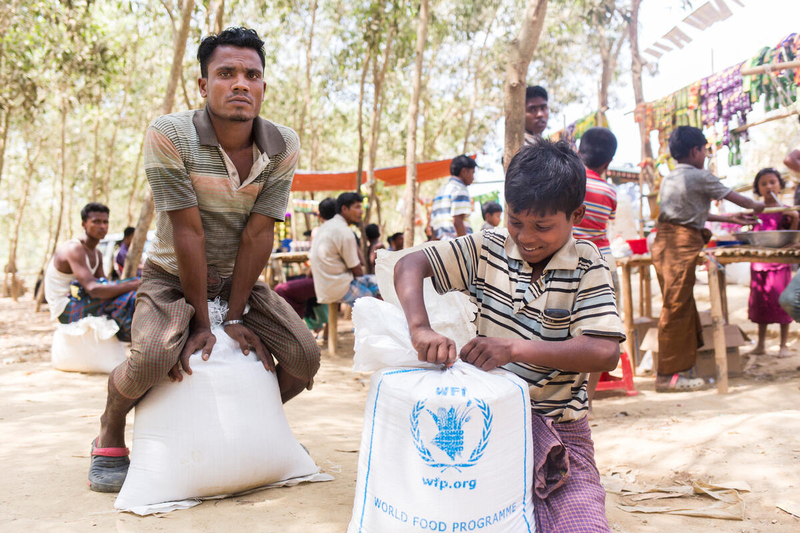WFP Steps up Operations in Response to Fast Rising Hunger in Myanmar

YANGON, Myanmar – The United Nations World Food Programme (WFP) is to mount a new food assistance operation, targeting up to 2 million vulnerable people in the poor townships in Myanmar’s main cities and other areas where population displacement has recently taken place.
With the triple impact of pre-existing poverty, COVID-19 and the current political crisis, hunger and desperation are rising sharply across Myanmar. The U.N. World Food Programme estimates that within the next six months, up to 3.4 million more people will be hungry, particularly those in urban centers.
“More and more poor people have lost their jobs and are unable to afford food,” said U.N. World Food Programme Myanmar Country Director Stephen Anderson. “A concerted response is required now to alleviate immediate suffering, and to prevent an alarming deterioration in food security.”
Already, there are signs of families in and around Yangon being pushed to the edge, skipping meals, eating less nutritious food and going into debt just to survive. The U.N. World Food Programme’s response in Yangon will target 10 of the poorest townships, many of which are home to large informal settlements. The U.N. World Food Programme is also monitoring the situation in other parts of the country, and is ready to provide assistance to affected communities, including those newly displaced by armed conflict, if required.
The latest U.N. World Food Programme market monitoring shows that in Yangon and across the country, the average rice price has increased by five percent since January, and the average cooking oil price has increased by 18 percent since February. In Yangon, an up to 25 percent increase in cooking oil price was also recorded. The increases are particularly high in some border states including Rakhine, Kachin and Chin. In Kachin state, for example, rice prices have risen by up to 43 percent in some townships, and cooking oil by 32 percent. The price of fuel has increased by roughly 30 percent nationwide.
Despite the volatile situation, the U.N. World Food Programme has maintained its humanitarian assistance to internally displaced people and other vulnerable populations affected by long-running conflict. In March, the U.N. World Food Programme assistance reached 374,000 people in conflict affected areas of southern Chin, Kachin, Rakhine and northern Shan states.
In the coming months, the number of people the U.N. World Food Programme assists will nearly triple – from 1.3 million to 3.3 million. To do this, $106 million is required urgently.
“To prevent a large-scale humanitarian crisis unfolding in front of our eyes, we must step up. We count on the international community to continue standing with the people of Myanmar,” said Anderson.
# # #
Resources
WFP Myanmar Analysis of the Economic Fallout & Food Insecurity
The United Nations World Food Programme is the 2020 Nobel Peace Prize Laureate. We are the world’s largest humanitarian organization, saving lives in emergencies and using food assistance to build a pathway to peace, stability and prosperity for people recovering from conflict, disasters and the impact of climate change.
Follow us on Twitter @WFPUSA, @WFP_Media and @WFPAsiaPacific




